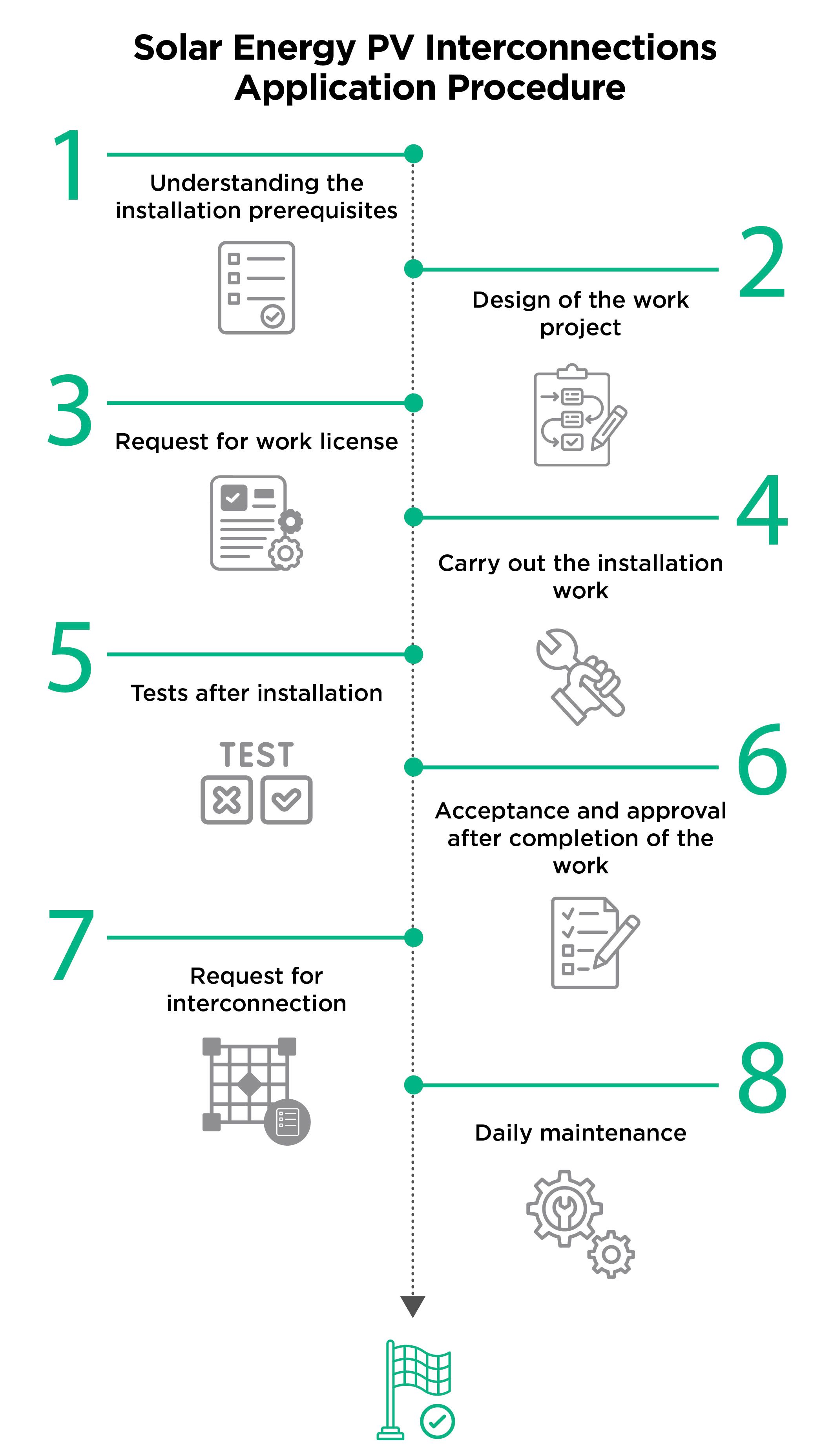
Application Procedure

Step 1: Understanding the installation prerequisites
- Understand the ownership of the installation site (whether or not you have the legal right to use that rooftop or installation site).
- Assess the available space at the installation site (if it is a rooftop, at least half of the area should be kept clear of any clutter for fire escape purposes).
- Ensure there is sufficient solar resource (sunlight at the installation location must not be blocked by other buildings).
Note: If it is a building of architectural artistic value or a complex located in a classified real estate buffer zone, the relevant provisions of the Cultural Heritage Protection Law of Macau must be considered.
Step 2: Design of the work project
- After confirming the conditions for installing the PV system, the PV system work project must be prepared by a technician registered with the DSSCU (such as a civil engineer or an electrical engineer, etc.) in accordance with this regulation and current applicable laws.
Note: For PV systems not connected to the grid, but connected to the consumer's electrical network, the installation of an anti-backflow device may be required when defining the connection point between the consumer's electrical network and the public electrical network.
Step 3: Request for work license
- In accordance with current provisions, the work project must be submitted to DSSCU. The work can only begin after the respective project has been approved and the license to carry out the work has been issued.
- The installation work of the PV system with a total capacity of up to 3 kWp may begin 30 days after the respective project has been submitted to the DSSCU for notification.
Note: If it is a building of architectural artistic value or a complex located in a classified real estate buffer zone, in accordance with the provisions of the Cultural Heritage Protection Law, the start of work can only be approved by DSSCU after obtaining the consent of the Cultural Affairs Bureau.
Step 4: Carry out the installation work
- During the execution of the work, the requirements relating to construction safety and those contained in the Prevention and Control of Environmental Noise Law must be taken into account.
Step 5: Tests after installation
- Before the PV system goes into operation, the engineer responsible for the project carries out tests to ensure that the system meets the requirements set out in this regulation concerning the quality of electrical energy, warning signs, safety and protection, etc. For details, please refer to “PV Installation and Testing Summary Report”.
- The engineer must sign the respective declaration of responsibility.
- Inverters that meet the requirements for “harmonics and waveform distortion” tests related to the quality of electrical energy as stipulated in the regulation are considered compliant and do not require further testing. However, relevant test reports or certificates must be submitted as proof.
Step 6: Acceptance and approval after completion of the work
- Once the work has been completed, request acceptance from DSSCU.
- The purpose of acceptance by DSSCU is to ensure that the work carried out is in accordance with the project approved by DSSCU and meets the provisions of this regulation.
- PV systems not connected to the public power network may come into operation after approval from DSSCU.
Step 7: Request for interconnection
- After the PV system installation work has been accepted and approved by DSSCU, request interconnection with the public power network from CEM.
- Submit technical descriptions, declaration of responsibility and test records as required by the regulation.
- Confirm the location of the connection point with the public power network and make the corresponding arrangements for interconnection.
- CEM is responsible for installing the meter at the connection point.
- Interconnection can proceed after signing the PV interconnection contract.
Step 8: Daily maintenance
- Carry out daily maintenance of the PV system, such as making sure that the surface of the PV panels is clean, the connector is properly connected and the inverter operates normally, among others.
 Login
Login